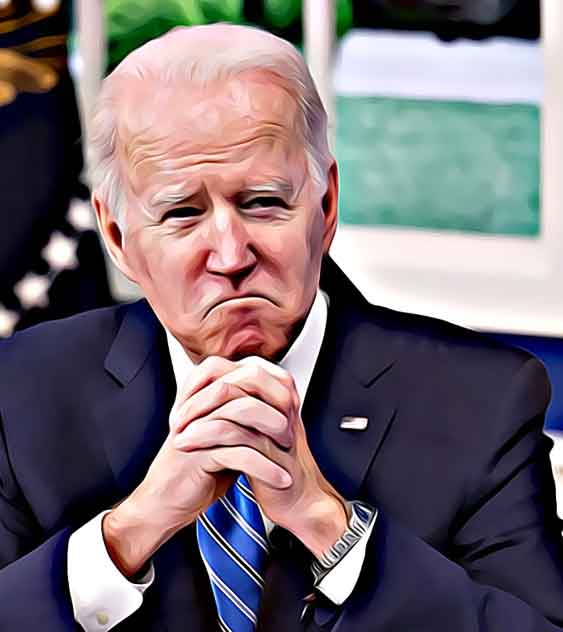
When e-commerce demand leaped at the onset of the pandemic in 2020, the retailer decided to expand capacity to meet higher growth forecasts.
Then, when the labor market started tightening a year ago, Amazon pressed ahead, paying whatever it took to build more fulfillment centers, buy more trucks, and hire more drivers and distribution center workers.
On the most recent quarterly earnings conference call on Thursday, the company announced it has now built out the capacity it needed. It is even overstaffed with excess warehouse capacity, and plans to pull back on hiring and investing in the short term while it waits for demand to catch up.
This is probably the best leading indicator you can get that general inflationary pressures in the economy should begin easing over the next couple of quarters.
Amazon is a great bellwether for changes in macroeconomic trends because of its sheer size and the consistency of the company's growth and evolution. In the most recent 12 months its revenues from North America - which includes e-commerce, advertising and Prime subscriptions, but not its lucrative Amazon Web Services division - totaled $285 billion, a little more than 1% of the U.S. gross domestic product. In the quarter ended March 31, these revenues were up 50% from the same period two years ago.
Filling out that growth arc has been incredibly resource-intensive, and particularly costly over the past year because of economy-wide shortages of labor and materials. Worldwide, the company increased its headcount by 27.6% over the past year, or 351,000 employees, and invested $63.9 billion in property and equipment.
Those investments may have been great news for customers, who were able to get more products delivered cheaper and more quickly than they would have if the company had been more restrained. But they were terrible for Amazon's bottom line in an inflationary and resource-limited environment.
First-quarter operating margins in North America fell to negative 2.3% from 5.4% a year earlier. Investors have punished Amazon for building that unprofitable excess capacity, with the stock falling by 20% over the past year. That's why the company's announcement that it will pull back on investing and hiring to focus on productivity and efficiency is so important. A year ago, Amazon's biggest challenge was scaling growth - the buildout that ended up being incredibly expensive. Today the challenge is getting its costs under control and bringing demand and supply back into balance.
Inflation works kind of like freeway traffic. When you drive your car onto a road to go where you need to go at the same time a bunch of other cars are heading in the same direction, all those cars create traffic that blocks your progress. And every car views all the other cars as obstacles to their own progress. But if you and a lot of those other cars just stayed home instead, there wouldn't be any traffic slowdowns.
So when Amazon hired hundreds of thousands of workers and spent tens of billions of dollars, it was just doing what it needed to do to grow. But to so many other companies in the economy, it represented a huge driver of inflation. Conversely, Amazon now is just right-sizing its business by cutting back on spending. But to other companies looking to hire workers or secure land to build distribution centers, it's an abatement of inflationary pressures.
There's perhaps a macroeconomic lesson here as well. Because Amazon is so large, any effort to expand quickly is going to hurt its profit margins and push up prices in the supply chain. Slowing those ambitions should both improve Amazon's profit and lead to less inflationary pressure economy-wide.
Both for Amazon and the U.S. economy as a whole, the past year has been characterized by rapid buildout of capacity to meet the demand surge that followed the reopening of the economy and multiple rounds of fiscal stimulus.
It's been a bumpy and sometimes painful ride. But we've now made a lot of progress and the hope is that, going forward, the rush will settle down and create a smoother ride for investors, employees and consumers alike.
(COMMENT, BELOW)
Previously:
• 01/20/22 Don't call me on Friday. That's my 'me time'
• 01/06/22 2022 is the year to buy your first luxury electric car
• 06/03/21 The post-pandemic boom will have a sequel in 2022
• 05/31/21 Florida may lose some of its boomer shine
• 01/11/21 Colleges bet on football in their own K-shaped recovery
• 12/31/20 Just send the bigger bucks already
• 08/24/20 Young people can't buy homes until older owners . . . move on
• 08/18/20 Our pandemic love affair with e-commerce could soon sour
• 08/10/20 Booming 'zoom towns' should ease city housing costs
• 07/11/20 With a Biden economy, will America be condemned to relive the '70s?
• 07/14/20 Renting and homebuying swap roles in the covid-19 market
• 07/13/20 Markets may have a reason to rise along with covid-19 cases
• 04/27/20 U.S. economy may have hit the coronavirus bottom
• 11/12/19 The 2020 economy should feel a lot better: What to, realistically, expect
• 04/23/19: Gen Z is likely to temper aging socialist millennials
• 03/25/19: All signs point to a housing boom ahead
• 02/19/19: Trump's economic gamble might make sense
• 02/15/19: Scaring off Amazon will backfire for the Left
• 01/29/19: The 2020 election will shred the Obama coalition
• 11/15/18: Amazon proving the 'rich get richer'?
• 11/13/18: How gerrymandering can reduce the partisan divide
• 10/22/18: The politics of the next recession will be a disaster
• 08/02/18: The future of the US looks a lot like ...
• 05/05/18: Brick-and-mortar stores may start to make sense again
• 05/05/18: College admissions season is about to get much easier
• 05/03/18: Changing housing needs of millennials will change economic development
• 02/13/18: The big idea for Middle America is to think small
• 02/07/18: Dems are caught in a tax bill trap this year
• 10/25/17: Good times have come to Trump-leaning states
Sen is a portfolio manager for New River Investments in Atlanta and has been a contributor to the Atlantic and Business Insider.


 Contact The Editor
Contact The Editor
 Articles By This Author
Articles By This Author